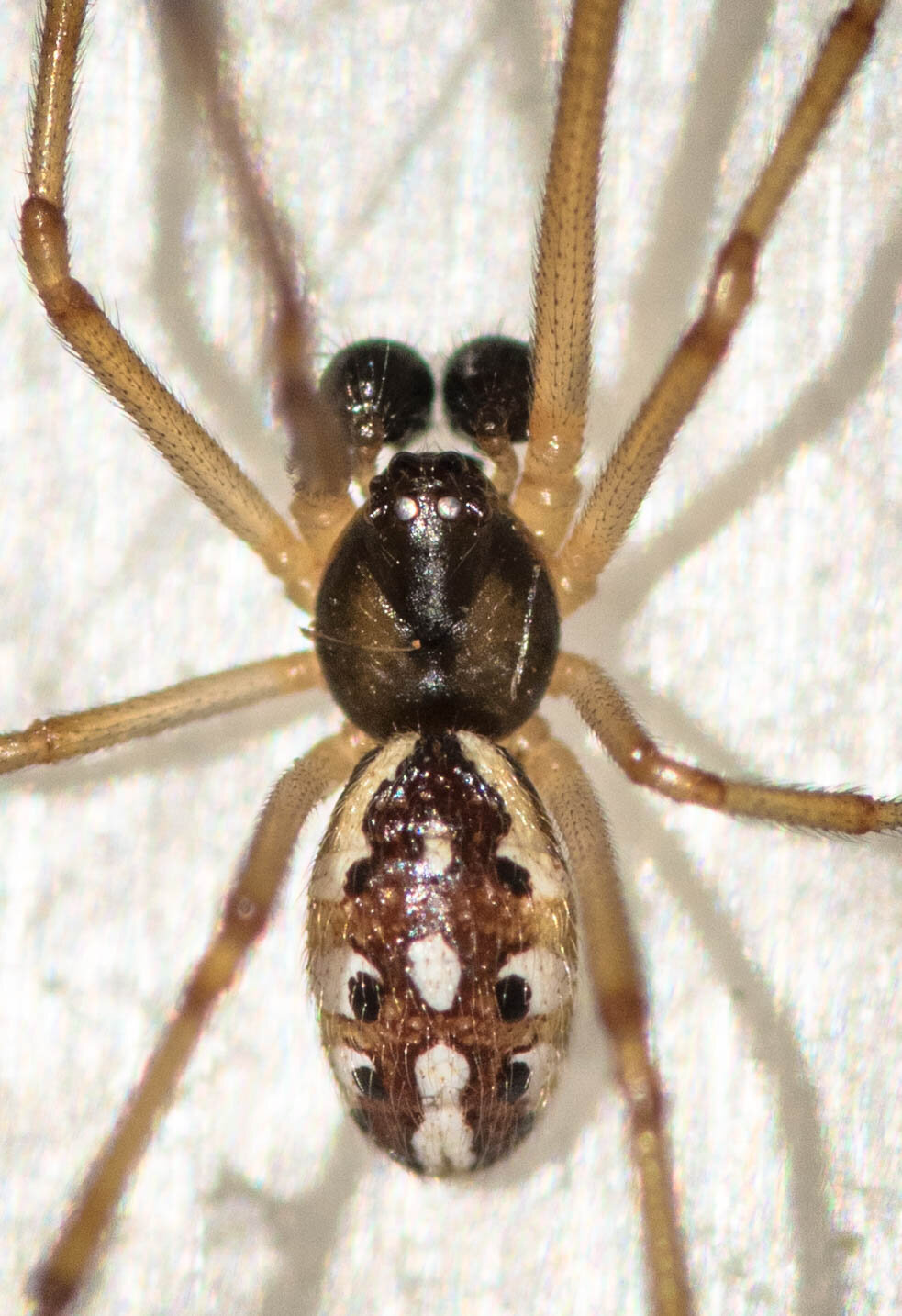
A mature male brown spider (Latrodectus geometricus). Credit: Wikimedia Commons, CC BY-SA 4.0
Invasive brown widow spiders on three continents were heavily infected with a single strain of Rhabdochlamydia, a bacterium related to major human and animal pathogens, including chlamydia. However, a bite from these spiders will not infect humans with chlamydia.
Until now, Rhabdochlamydia had only been found in a few organisms—a tick, an isopod, a cockroach, and another spider—and even then, it was a rare occurrence in all of these organisms.
Dr. Monica Mowery and colleagues at Ben-Gurion University of the Negev compared the microbial communities in populations of brown widow spiders collected in South Africa (the likely native range of the spider) and invasive populations in Israel and the United States. The overwhelmingly dominant bacteria, Rhabdochlamydia, was found in 86% of the spiders surveyed. It was also found in female spider eggs, indicating that mother spiders pass the bacteria on to their offspring.
“Our results suggest that this dominant and widely distributed chlamydial bacterium has an important role in the invasive brown widow spider,” explained Dr.
The study was recently published in Scientific Reports.
Characterization of potentially important and widespread bacterial symbionts is a step toward understanding their relevance to ecological interactions and responses to rapid environmental change. The high prevalence of Rhabdochlamydia in all spider populations tested suggests that it may have an important functional role and may contribute to spider invasion success.
The brown widow spider, Latrodectus geometricus, is an urban invasive species that competes with native spider species found in warm climates around the world. These spiders have neurotoxic venom and can be dangerous to young children and the elderly.
Microbial associates can influence the spread and invasive success of species in a new environment and can be displaced or lost during the invasion process. South African brown widow spiders generally had more distinct types of bacteria compared to more recent arrivals in Israel, where brown widows were first found in Tel Aviv in 1980, and in the United States, where the spiders were expanded from southern Florida in the 2000s. This higher microbial diversity supports the idea that the invasive brown widow spider originated in southern Africa.
Additional researchers included Prof. Yael Lubin and Prof. Michal Segoli from Ben-Gurion University of the Negev, Prof. Jennifer White, Dr. Eric Chapman and Laura Rosenwald of the University of Kentucky, Thembile Khoza of the National Biodiversity Institute of South Africa, and Robin Lyle of the Agricultural Research Council, South Africa.
More information:
Monica A. Mowery et al, Endosymbiont Diversity across Native and Invasive Brown Widow Spider Populations, Scientific Reports (2024). DOI: 10.1038/s41598-024-58723-2
Provided by Ben-Gurion University of the Negev
citation: Invasive brown widow spiders found to harbor new bacteria related to chlamydia (2024, July 2) Retrieved July 2, 2024 from https://phys.org/news/2024-07-invasive-brown-widow -spiders-host.html
This document is subject to copyright. Except for any fair agreement for study or private research purposes, no part may be reproduced without written permission. The content is provided for informational purposes only.
